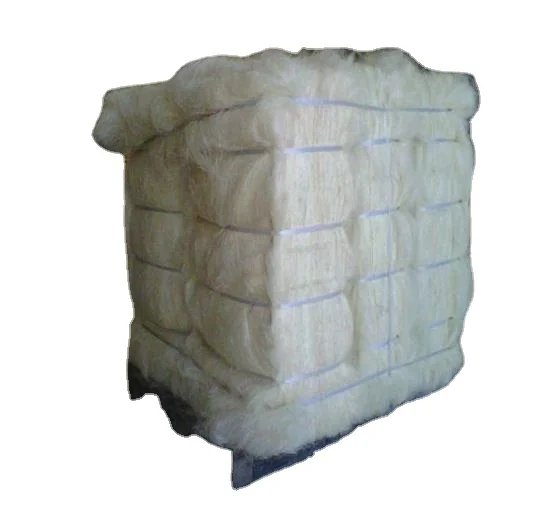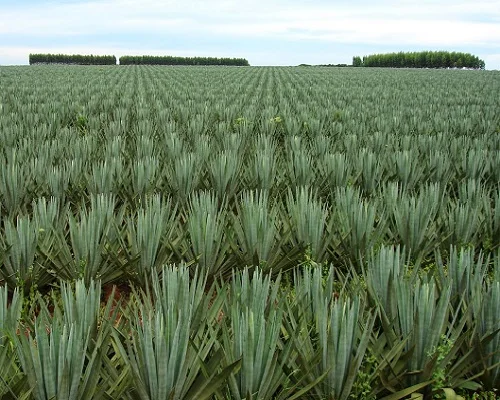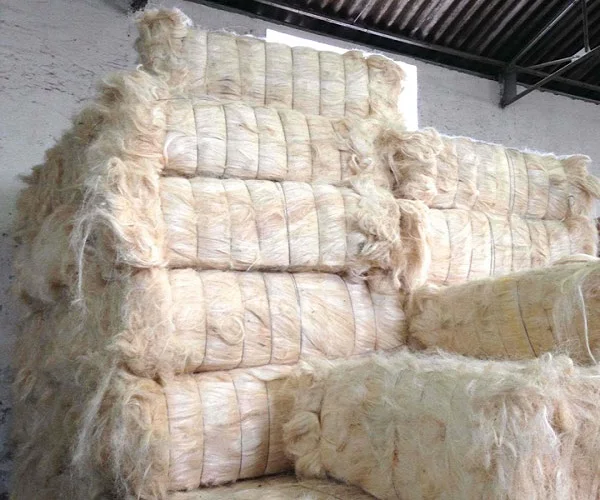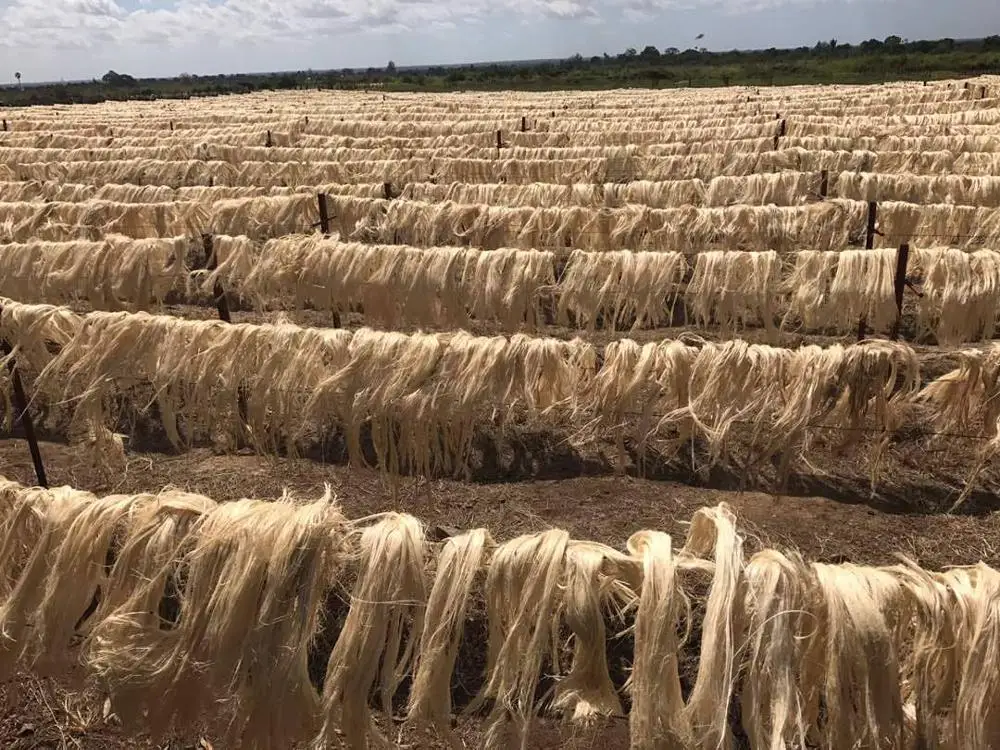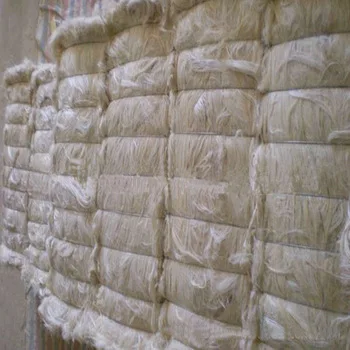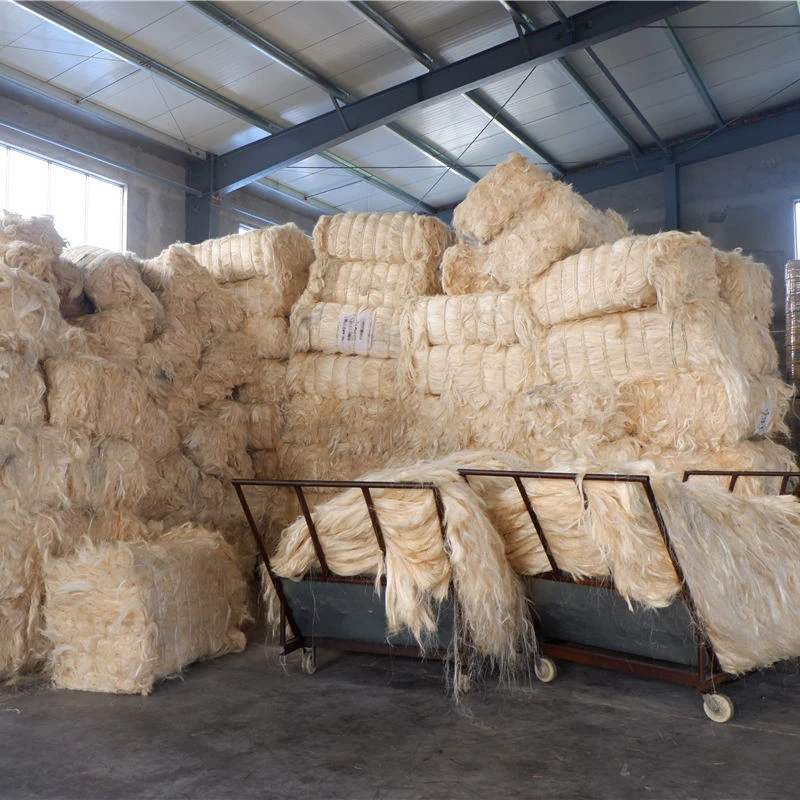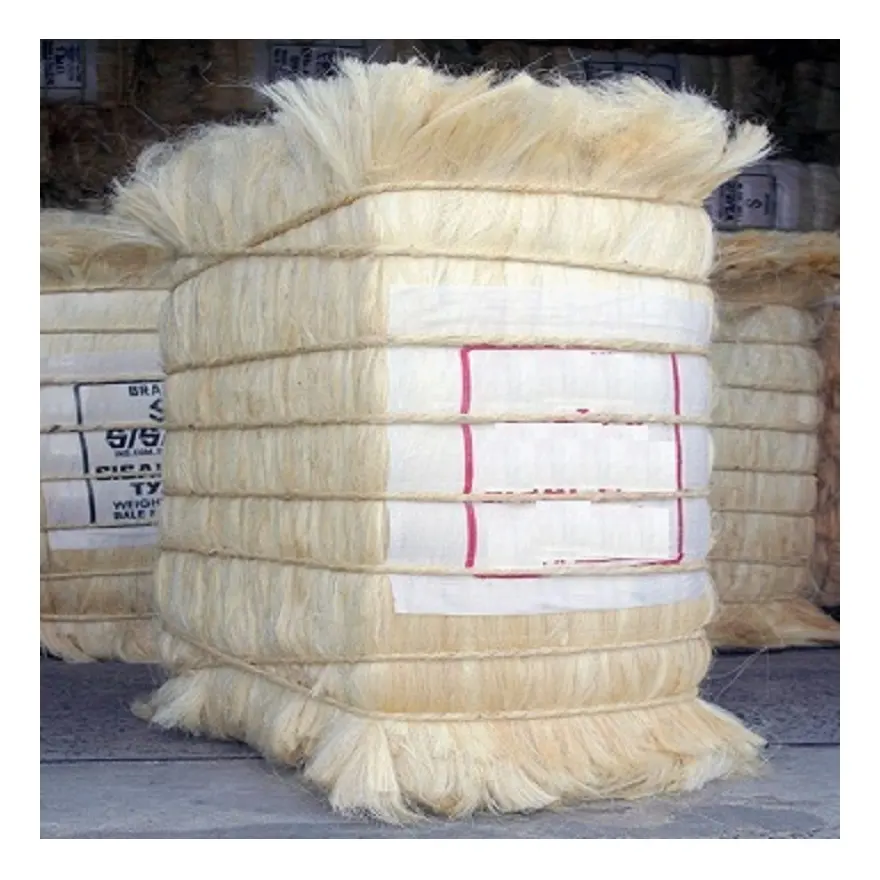Высококачественное натуральное сырье из сизалевого волокна для
- Категория: Other Fiber >>>
- Поставщик: TRADAZUR
Поделиться:
Описание и отзывы
Трекер стоимости
| Месяц | Минимальная цена | Макс. стоимость |
|---|---|---|
| Sep-19-2025 | 0.72 $* | 0.22 $* |
| Aug-19-2025 | 0.8 $* | 0.50 $* |
| Jul-19-2025 | 0.81 $* | 0.77 $* |
| Jun-19-2025 | 0.70 $* | 0.58 $* |
| May-19-2025 | 0.26 $* | 0.30 $* |
| Apr-19-2025 | 0.11 $* | 0.66 $* |
| Mar-19-2025 | 0.1 $* | 0.61 $* |
| Feb-19-2025 | 0.79 $* | 0.75 $* |
| Jan-19-2025 | 0.16 $* | 0.28 $* |
Характеристики
Sisal fiber is derived from the leaves of the sisal plant. It is usually obtained by machine decortications in which the leaf is crushed between rollers and then mechanically scraped. The fiber is then washed and dried by mechanical or natural means. The dried fiber represents only 4 % of the total weight of the leaf. Once it is dried the fiber is mechanically double brushed. The lustrous strands, usually creamy white, average from 80 to 120 cm in length and 0.2 to 0.4 mm in diameter. Sisal fiber is fairly coarse and inflexible. It is valued for cordage (ropes, baler, binder twines, etc.) use because of its strength and durability. The higher-grade fiber after treatment is converted into yarns and used by the carpet industry. Sisal fiber is fairly coarse and inflexible. It is valued for cordage use because of its strength, durability, ability to stretch, affinity for certain dyestuffs and resistance to deterioration in saltwater.
Sisal is used by industry in three grades:
- The lower grade fiber is processed by the paper industry because of its high content of cellulose and hemicelluloses.
- The medium grade fiber is used in the cordage industry for making: ropes, baler and binders twine. Ropes and twines are widely employed for marine, agricultural and general industrial use.
- The higher-grade fiber after treatment is converted into yarns and used by the carpet industry.
Origin and History of Sisal Fiber
Sisal is the coarsest of the ‘hard’ vegetable fibers. There are many varieties of the Agave plant throughout the tropical and sub-tropical world, especially in the Central American region, but the most important variety for fiber production on a commercial basis are A. sisalana (and its hybrids, the most common name) and Agave fourcroydes (better known as henequen).
The East African sisal plant was originated in the Yucatan in 1983. A little later, sisal bulbils sent from Kew Gardens were planted in Kenya. After a difficult start, sisal production in East Africa prospered and by the 1960s Tanzania production alone totaled some 230,000 tons. Production in East Africa has contracted materially over the past three decades in response to the continuing movement in end products away from the low value agricultural twine market into considerably higher value more specialized end products, such as carpets, wire rope cores, dartboards, specialty pulps, plaster reinforcement and handicrafts. Now Brazil dominates the world market in terms of sisal production.
General Properties of Sisal Fiber:
- Sisal Fiber is exceptionally durable with a low maintenance with minimal wear and tear.
- It is Recyclable.
- Sisal fibers are obtained from the outer leaf skin, removing the inner pulp.
- It is available as plaid, herringbone and twill.
- Sisal fibers are Anti static, does not attract or trap dust particles and does not absorb moisture or water easily.
- The fine texture takes dyes easily and offers the largest range of dyed colors of all natural fibers.
- It exhibits good sound and impact absorbing properties.
- Its leaves can be treated with natural borax for fire resistance properties.
Physical Properties of Sisal Fiber:
Physical properties of sisal fiber is explain below:
- Diameter —————— 22–80 μm
- Fiber length ————— 1000–1250 mm
- Density ——————– 1.16g / cm3
- Moisture regain ———- 11 %
- Breaking strength ——– 30–45 cN/tex
- Elongation —————- 2–3 %
Compression Properties of Sisal Fiber:
- Compression% ———— 9.578
- Recovery from Compression%————— 37.5
- Compression work (x102 J) —————— 1.59
- Recovery work from compression (x102 J) ——— 0.117
Chemical Composition of Sisal Fiber:
| Cellulose | 65% |
| Hemicelluloses | 12% |
| Lignin | 9.9% |
| Waxes | 2% |
| Total | 100% |
Identification of Sisal Fiber:
| Name of fiber | Fiber type | Flame reaction | Color | After Burn order |
| Sisal | Cellulose fiber | May flair when lit, burn | Soft gray ash | Burning paper or grass |
Structure of Sisal Fiber
Sisal fibers used for textile processing are multicellular fibers. In cross section, the fiber bundles are built up of about 100–200 single cells which are bonded together by natural gums. Single cells consist of thick walls with a central lumen and shape of single cell is polygonic. The cross section of sisal fibers is neither circular nor fairly uniform in dimension. The lumen varies in size but is usually well defined. Longitudinally the fiber is straight and without crimp, and approximately cylindrical in appearance. There are many knots and stripes on the surface of the fiber, which confirms that the fiber bundle is composed of many single cells which are arranged in straight parallel lines.
Processing of Sisal Fiber:
The processing technique employed is obviously dependent upon the end-use. The sisal fiber bundles can be spun into yarns by using traditional spinning processes, which include bale opening, mixing, cutting into staple fiber bundles, carding, drawing and sliver formation and spinning. The yarns can be then plied and twisted to form ropes and twines, as well as to produce woven fabrics for gunny bags. Long sisal fiber bundles can also be used directly in making ropes from slivers.
Uses / Application of Sisal Fiber:
From ancient times sisal has been the leading material for agricultural twine because of its strength, durability, ability to stretch, affinity for certain dyestuffs, and resistance to deterioration in saltwater.
- Sisal is used commonly in the shipping industry for mooring small craft, lashing, and handling cargo.
- It is also surprisingly used as the fiber core of the steel wire cables of elevators, being used for lubrication and flexibility purposes. Traditionally sisal was the leading material for agricultural twine or baler twine. Although this has now been overtaken by polypropylene.
- It is used in automobile industry with fiberglass in composite materials.
- Other products developed from sisal fiber include spa products, cat scratching posts, lumbar support belts, rugs, slippers, cloths and disc buffers.
- Sisal is used by itself in carpets or in blends with wool and acrylic for a softer hand.
- Sisal is also used for non-woven matting, brushing and roving.




